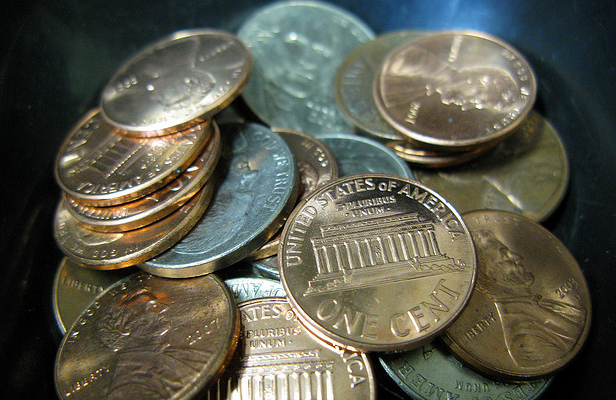Production Of Pennies, Nickels Cost Taxpayers $105 Million In 2013
We all know that old coins can be very valuable and that saving your change adds up. But did you know that minting the low-value currency creates quite a tab for U.S. taxpayers? That’s because the cost to produce pennies and nickels is nearly twice as much as they are actually worth.
For the eighth year in a row the cost of making pennies and nickels exceeded their face value, costing the U.S. Treasury, and in turn taxpayers, $105 million, the Washington Post reports.
In 2013, cost of minting a penny was 1.8 cents, while the cost to mint a nickel was 9.4 cents. On the flip side, the cost to create a dime was a mere 4.6 cents.
The U.S. Treasury spent nearly $2 for every dollar in nickels and pennies it put into circulation last year. That means for every dollar you have in pennies it actually cost $1.83 to produce and for every dollar in nickels it cost $1.88. Putting the same amount of dimes and quarters into circulation cost the Treasury less than 50 cents.
Production costs for a dollar’s worth of pennies and nickels has always been higher than that of dimes and quarters, since it takes more of the coins to make a dollar. However, the last several years have been particularly hard on the production of pennies and nickels.
Data compiled by the Washington Post shows that coin manufacturing costs rose gradually from 1984 to 2005, when the cost of production for pennies and nickels began to spike.
The change was likely caused by the cost of metals used to produce the low-value coins. Pennies are comprised of copper and zinc, while nickels are made from nickel and zinc. As the cost for the metals rose the U.S. Mint began losing money.
In each of the past three years the Mint has lost more than $100 million on the production of pennies and nickels.
The consistent loss is enough for politicians to take notice. President Obama included a provision in his 2015 budget to assess the future of currency and explore alternatives.
One alternative could include changing the metal used to make the coins. The Post reports that the Canadian nickel is comprised of 95% steel and costs less than their face value.
Another option is to discontinue the use of pennies and nickels. Canada ceased production of its one-cent piece in 2012 and stopped distributing the coin in 2013. However, similar attempts to do so in the U.S. were squashed by the zinc industry and the operator of change-redeeming kiosks like CoinStar.
Pennies have long been the outcast of U.S. currency. The once-valuable buying machine has been devalued so much that most people don’t think twice about retrieving them from after passing through airport security or using them to make a passive aggressive payment.
In 2012, the “Death to Pennies” YouTube video visually laid out why pennies are the bane of most people’s existence. The video took viewers on a journey of how the coin transformed from its glorious copper beginnings to a now semi-worthless piece of metal.
Taxpayers lost $105 million on pennies and nickels last year [The Washington Post]
Want more consumer news? Visit our parent organization, Consumer Reports, for the latest on scams, recalls, and other consumer issues.


